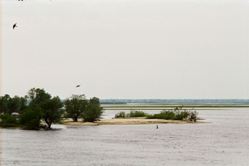
Figure 23: River Prypjat in Belarus. Photo L.I. Kooistra
Rivers were a fundamental aspect of the Dutch River Area (Fig. 23). The landscape was defined by river channels and their sedimentations. The meandering rivers changed their course over time and often flooded their banks in winter. The sediments left behind by the rivers, both in the old river-beds and the flooded areas, offered fertile soils.
Rivers could be used as channels for quick and easy communication and transportation of goods. Finds of Roman ships prove that the Roman army used rivers to transport wood and stone from Germany, and cereals either from Gaul or Germany or from England to the Netherlands. While there is no evidence for the use of boats by local people, it seems likely that they used the smaller rivers and channels. Transport along the Rhine may have been under the control of the Roman army, although the actual transports themselves were organised by traders.
Rivers and natural ponds were suitable for various species of fish. This resource was probably not exploited systematically: despite sieving of a large number of samples, some excavations, such as Geldermalsen-Hondsgemet, have not yielded any fish bones. Sieved samples from Kesteren-De Woerd have yielded fish remains, but the numbers are modest (Zeiler 2001, 241, 266).
The main rivers for the inhabitants of Tiel-Passewaaij were the Rhine and the Linge. The River Rhine formed the northern border of the Roman Empire. The Rivers Linge and Waal were the closest rivers for the inhabitants of Tiel-Passewaaij. The latest start date for the appearance of the river Waal is the Late Roman period (Berendsen and Stouthamer 2001, 240), but others believe it was already active during the Late Iron Age (Roymans 2004, 131-32). In modern times, it is located within 1-2km of the excavated sites in Tiel-Passewaaij.
River transport is most suitable for cereals; livestock (cattle, sheep and horses) is much more likely to have been transported on the hoof. The large granaries in Passewaaijse Hogeweg form an indication that a surplus of cereals may have been produced here; therefore, river transport may have been of importance to the inhabitants of Tiel-Passewaaij.
© Internet Archaeology/Author(s)
URL: http://intarch.ac.uk/journal/issue27/5/3.1.4.html
Last updated: Tue Nov 10 2009